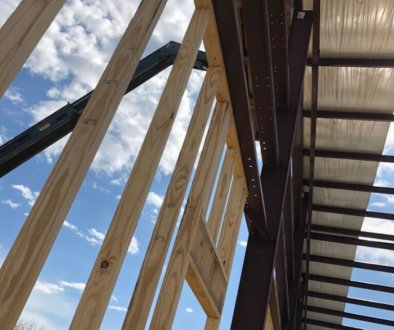 An HVAC system failure is at best inconvenient, and at worst can completely halt operations—or lead to damages beyond your HVAC system. For example, if your heat goes out your plumbing lines could freeze and burst. Below is a closer look at why HVAC systems fail, and the proactive steps you can take to all but eliminate the likelihood of downtime.
An HVAC system failure is at best inconvenient, and at worst can completely halt operations—or lead to damages beyond your HVAC system. For example, if your heat goes out your plumbing lines could freeze and burst. Below is a closer look at why HVAC systems fail, and the proactive steps you can take to all but eliminate the likelihood of downtime.
Commercial HVAC Preventative Maintenance
Just like taking your car in for oil changes and tune -ups, you must commit to a scheduled preventive maintenance plan. This must include quarterly or bi-annual service and test, monthly filter checks and change, and duct line inspections. The filter checks and changes are something your maintenance team can handle, but the service visit, system test, and line inspection must be performed by a HVAC expert. This will help to catch minor problems before they accelerate, extend the lifecycle of your system, and will make sure that your system is working with optimal efficiency.
Leak Detection
There are two types of leak detection that need to be performed: leaks in ducts and refrigerant leaks. Thanks to modern technology, finding AC refrigerant leaks in a commercial system has never been easier. A technician will inject a florescent dye into the system, that will pinpoint precisely where the leak is. Duct line leaks can occur by rodents or improper cleaning and maintenance. Even a small leak wastes energy, increases utility bills, and decreases how well each room can be heated or cooled. The harder a system must work to heat or cool, the shorter the lifespan.
Thermostat Malfunction
Sometimes the malfunction is as simple as an improperly calibrated thermostat or malfunctioning electric thermostat. If your system is no longer working as programmed or does seem to be heating or cooling to the temperature it’s set to, check the thermostat manual for general troubleshooting. If that doesn’t fix the problem, it’s time for a service visit. If you don’t yet have a programmable thermostat, it’s time to upgrade to one—ideally to one that can be operated remotely.
Damper Balance
The larger your building and longer your air ducts, the more dampers are required to control the airflow in your lines. If you find that some rooms are significantly hotter or cooler than others, your dampers are likely out of balance. This is a fairly fast and easy fix, and one that can go a long way in improving comfort.
Scheduled Duct Cleaning
In addition to checking, cleaning, and changing the air filters in your building, you must also schedule a full duct cleaning. For most businesses, the ducts only need to be cleaned every 2 to 5 years. However, if contamination is of concern, you must maintain a set air quality compliance, or if you operate a business where an above average amount of particulates is released into the air—then you will need to increase the frequency of both filter changes and duct cleaning. Investing in high-quality filters will slow the buildup of dust, mold spores, allergens and particulates in your ducts, but ducts still need to be periodically cleaned. Advanced technology, including high-pressure air compressors, and robotic cameras makes inspecting and cleaning your ducts easier and more efficient than ever.
The risk factors and maintenance schedules above are key in minimizing your risk of full or partial HVAC system failure. In between your custom maintenance and service schedule, keep your eyes and ears open for any changes in performance, odor, sound, air flow, or even an increase in tenant allergies and illness—reach out to your commercial technician to inspect your system.




